Long Before Its Loewe Revival, Paula’s Was Ibiza’s Hottest Spot
Paula’s Ibiza Vintage Shots
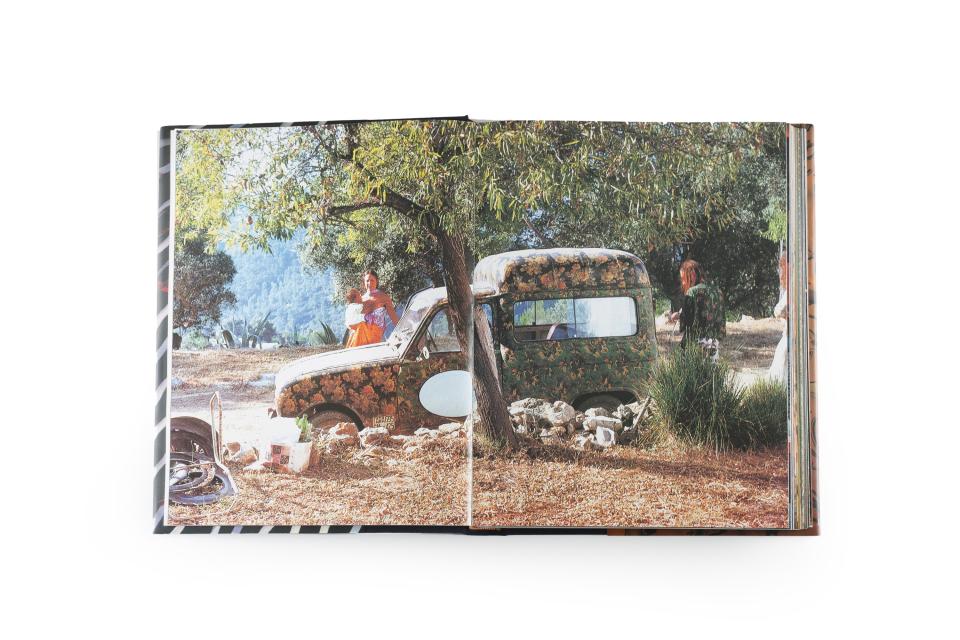
Armin Heinemann, right, with his first flower car
Photo: Courtesy of Loewe/Armin Heinemann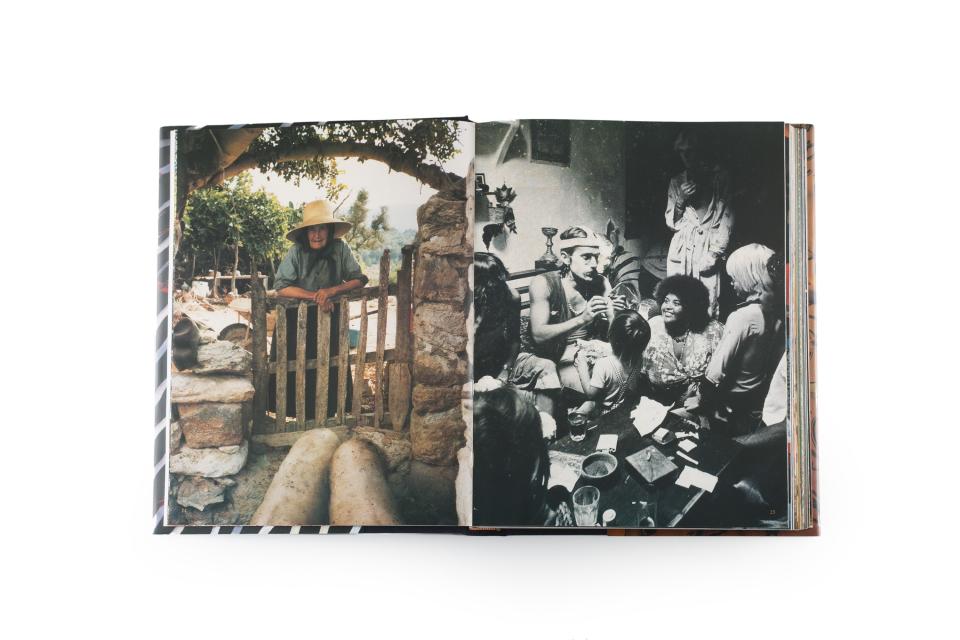
The mother of one of Paula’s first seamstresses, photographed by cofounder Stuart Rudnick (left), and Armin and friends, photographed by Helga Sittl (right)
Photo: Courtesy of Loewe/Armin Heinemann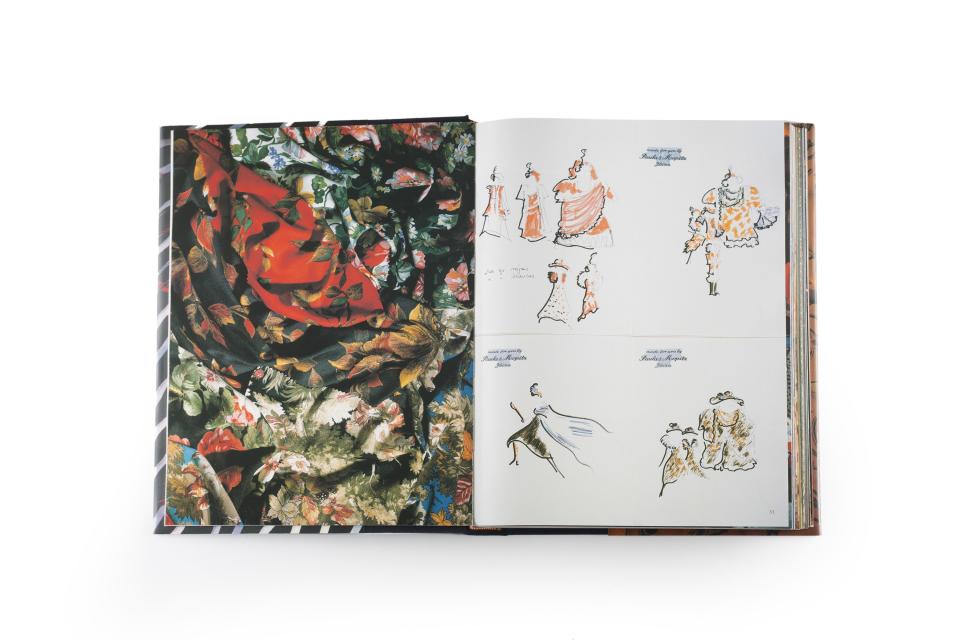
Some of the first fabrics and sketches for Paula’s, photographed by Conrad White
Photo: Courtesy of Loewe/Armin Heinemann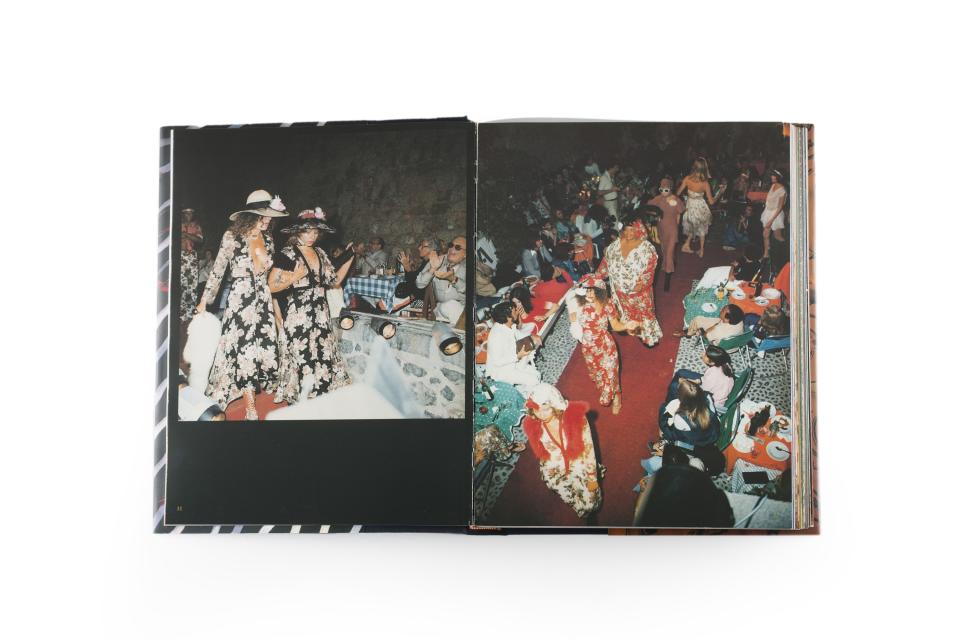
Scenes from a street fashion show for Paula’s, photographed by Vallmitjana
Photo: Courtesy of Loewe/Armin Heinemann
Stuart (near right) and Armin (far right) with friends, photographed by Ketja Felis
Photo: Courtesy of Loewe/Armin Heinemann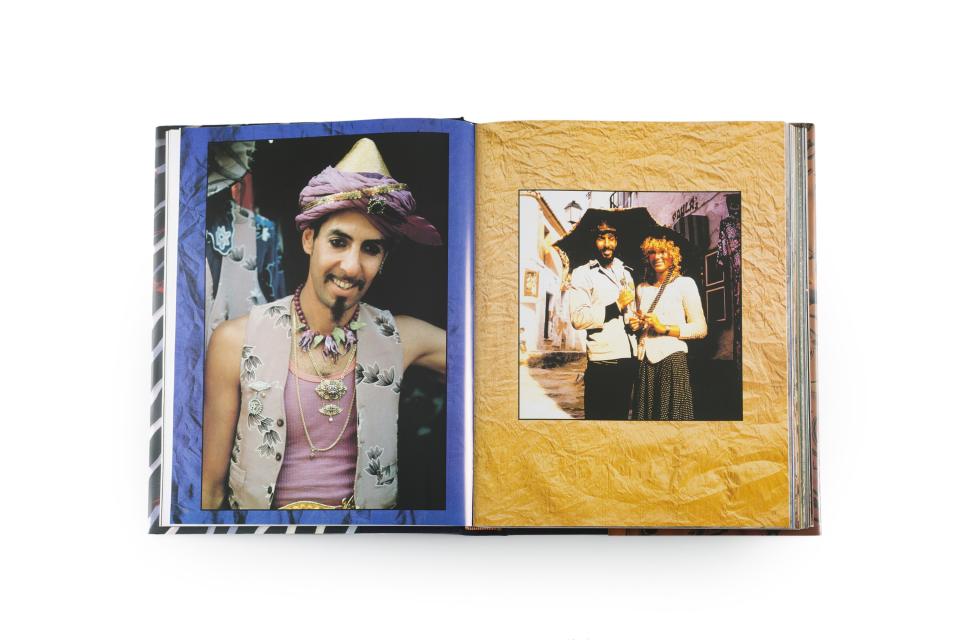
Stuart in Iila, photographed by Manfred Müller (left), Stuart and a friend (right)
Photo: Courtesy of Loewe/Armin Heinemann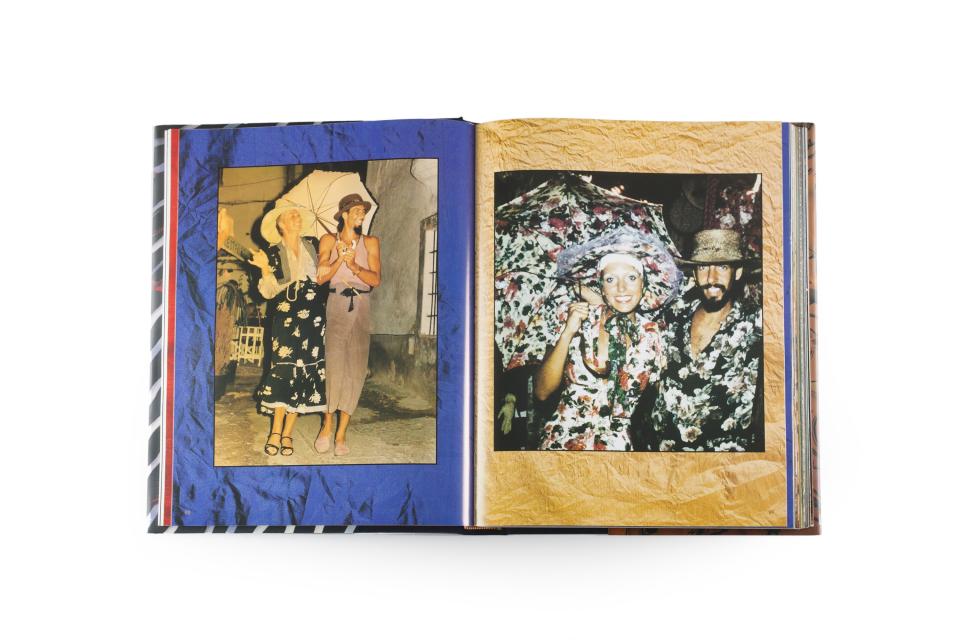
Stuart and friends
Photo: Courtesy of Loewe/Armin Heinemann
Paula’s, as featured in the travel guide, Dumont, photographed by Helda Sittl
Photo: Courtesy of Loewe/Armin Heinemann
Posing for a poster for Pacha in 1986, photographed by Toni Riera (left), posing for a 1997 Pacha poster, photographed by Conrad White (right)
Photo: Courtesy of Loewe/Armin Heinemann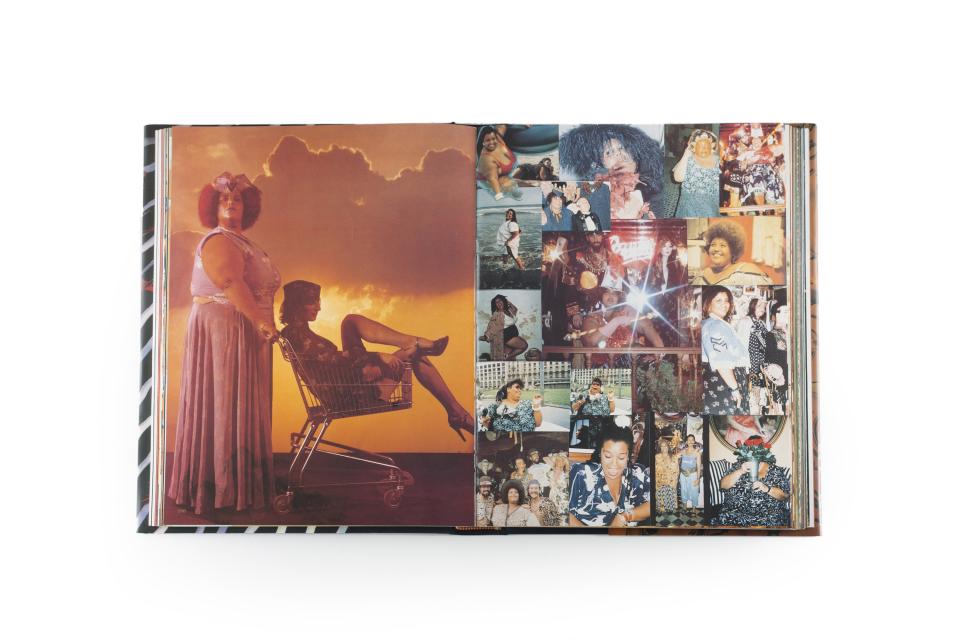
Friends of Paula’s
Photo: Courtesy of Loewe/Armin Heinemann
Paula’s ephemera
Photo: Courtesy of Loewe/Armin Heinemann
Women modeling Paula’s clothing
Photo: Courtesy of Loewe/Armin Heinemann
Weaving and painting fabrics for Paula’s
Photo: Courtesy of Loewe/Armin Heinemann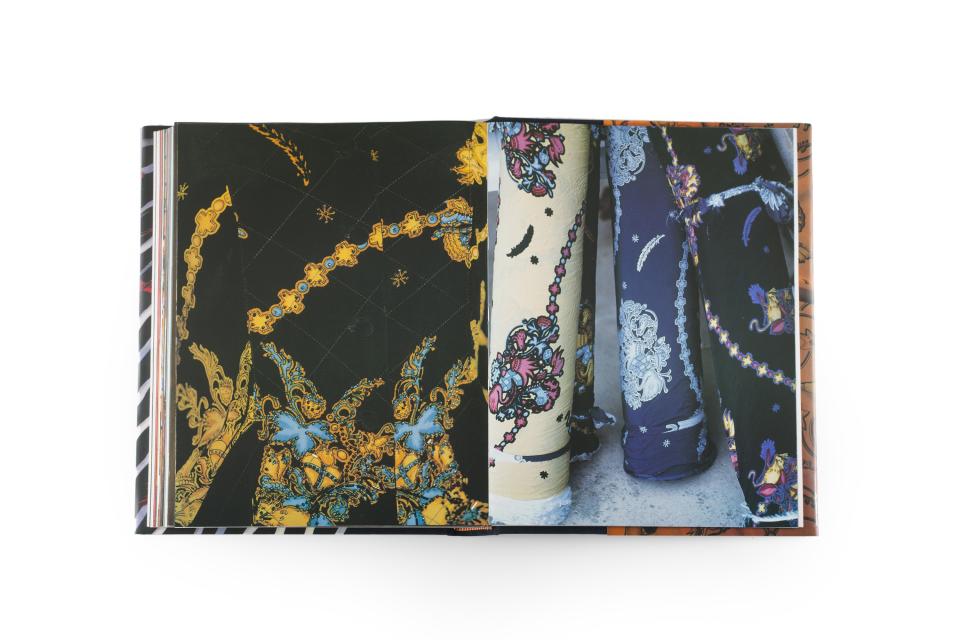
Details of a beaded jacket (left), and details of rolls of fabric (right)
Photo: Courtesy of Loewe/Armin HeinemannYou could be having a good summer, a great summer, or even a #hotgirlsummer, but there’s little chance that your revelries even hold a candle to the riotous Eden that Armin Heinemann presided over in Ibiza during the ’70s, and ’80s. A German architect by trade, Heinemann arrived in Ibiza in 1972 and came to own Paula’s, a boutique that was as famous for being an international hub for the hippie lifestyle as for its signature floral garments. Cut loose and free, with deep V-necks or blouson sleeves, the items sold at Paula’s promised to turn even straight-backed upper-crust visitors to Ibiza into spirited bohemians. More than just clothing the era’s most influential people, from Freddie Mercury to Jean Paul Gaultier (neither of whom you could call straight-backed), Paula’s also played host to the island’s best happenings. The evidence is in Heinemann’s book, Paula’s Ibiza 25 Years, which presents a collaged portrait of best days in this Balearic paradise.
The good times at Paula’s came to a close at the end of the 20th century, but couldn’t stay forgotten for long. In 2016, Loewe reached out to Heinemann about reviving his store and collections; creative director Jonathan Anderson had vacationed in Ibiza growing up and had become familiar with local Paula’s lore. The results have been co-branded as Loewe Paula’s Ibiza, a collection of womenswear, menswear, and accessories that’s been released yearly since the summer of 2017. The latest collection, photographed in the Dominican Republic by Gray Sorrenti, is a mash-up of tropical prints, seashell details, and gigantic “cushion” totes made of spliced patterns that channel the haphazard creativity of the era. Last weekend, Loewe hosted its own Paula’s fiesta on the island’s Eivissan coast. How did it compare to Heinemann’s heyday? He was, perhaps not coincidentally, out of town.
Here, the Paula’s founder reflects on his hippie heights and rethinking the idea of fashion collaborations in the 21st century.

What brought you to Ibiza, and why did you decide to stay?
We’re speaking about the ’60s and ’70s in Ibiza. It was the hippie times and the hippie culture. There was an international community of non-conformists, of runaways from society, in Ibiza. We all had our different reasons to come, but we wanted to be free of the pressure of life in our countries, from capitalism, and from the patterns of gender roles. I, myself, came because I fled from violence in my chaotic marriage. One day, I took my two children, and I ran away.
When I came to Ibiza, into this hippie world, I was prepared to enter into a period of creation. Of course, I took drugs like everybody, but I was not in danger to get lost in those drugs like you can easily do.… The drugs they helped me to discover the beauty of all I was seeing, the beauty of nature and the beauty of all the facets of my new hippie life. I was able to see everything as beautiful elements to play with and to work with. That was the situation when I came to Ibiza.
I read that you came to own the store in a sort of accidental way, that someone invited you there in the evening and sort of locked you inside until you agreed to buy it?
Yes. When I came to Ibiza, I wanted to be an architect; I wanted to continue my work, but there was no way that I could do that here. I had no idea about fashion. Somebody pushed that store on me, and I just said yes, and that was all. Then I got a postcard from a customer who wanted some blouses. That became a whole adventure of the beginning of the store in Ibiza. I had to find out: How do I get material? How do I find a seamstress? How do I produce and have things made? How do I sell it to the customer?
That was a very beautiful period of my life. I started very, very, very small with five blouses, and then I could buy material for two dresses. When that was sold I could buy material for four dresses, and then for eight, and so on and so on. I never had any debts, and I never took any credit. I didn’t start with the capital to invest and then have ideas of how to do things. It all just came how it came.
I did not feel that I entered into the fashion world, not at all. I just wanted to do my work and wanted to experience this beautiful adventure. It was all new to me, and I knew that I had to be honest to myself and that I had to be honest to the customers. Then I met Stuart [Rudnick, Paula’s co-founder]. We never felt anything like being part of the fashion world. We just felt that we lived a beautiful, very creative experience of having a store and being so lucky that customers were coming, tourists were coming, that we could attract them, and that we could make something happen in the store and in front of the store so that people would come. We just lived in our own personal Ibiza hippie world.
How did you design the pieces? Did you sketch them? Were they based on what materials you had available?
It was an adventure, of course. My head was prepared, in general, for the art of creation, and my training as an architect also helped me to understand the patterns and to understand how to put things together. If you really think about it, fashion is not so far away from architecture.… In fashion, sometimes, it’s easier because if the seamstress sets in the sleeves the wrong way, you can just cut them out and it’s fixed in a minute, whereas if the walls in a building are set wrong, it’s a little more complicated. So this part was also a relief from the pressures that I had as an architect to do things right and definite.
Here, in fashion, there came many playful and beautiful ideas of the moment. The seamstresses, they were very naïve. There were not professional seamstresses in a workshop; they were in the country, in their houses. In front of the food, the animals, the grandmother, and the children, you had to explain to them how you wanted your blouse or your dress to be done. Of course, they didn’t understand it because my Spanish was not so good at the time, so then many mistakes happened. All those mistakes were the base of new models and new creations. I learned to accept mistakes as something beautiful and something good.
How would you describe the Paula’s aesthetic?
This question is for somebody who decides to do something that starts very intellectually. We were not intellectual at that period or in those times. We were living a life full of adventures. Every moment was a creation. How can I explain that to you? For example, there was nobody who made fashion with floral prints at those times, neither international nor here in Ibiza. I found these old floral prints, it was curtain material, and I loved it, so I bought the material, and I brought it to the seamstress and asked if they could make the same blouse we had made before but make the sleeve different. She made a mistake and made the blouse with the material inside out. I thought it was even more beautiful that way. That’s how the fashion came about. It’s not like I decided to make a blouse with material from the wrong side because it was reflecting my ideas of aesthetics. It was very, very simple—very, very primary.
The store quickly became a cultural hub. What was it like to be there and work there at the time?
Nothing changed [from the beginning]. What changed was the quantity of dresses we made, and the quantity of customers, and the people that came passing by Ibiza. All the artists, people from fashion, writers, and people from television, they all passed by, and they got fascinated by the shop because they felt they could feel everything that I described before; that adventure of direct creation made the atmosphere in the shop come alive. I had a great partner in Stuart, who was able to decorate the shop in such a way that it was always fascinating, new, and something that was attractive for the people that passed by. We only had a very, very small window—like 3 feet by 3 feet—but he was able to make that the attraction of the street. Everybody who passed by there stopped and looked at it. He has a good way of communicating with people over aesthetics and over happenings. That’s how it became famous, our shop, because it was alive.
Loewe Paula’s Ibiza 2019
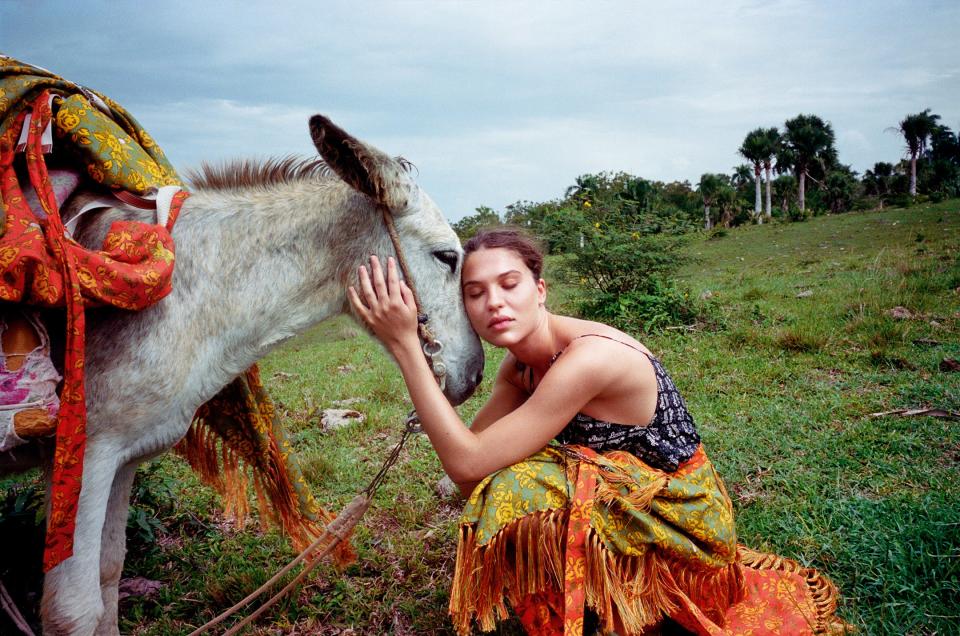
Photographs of Loewe’s 2019 Paula’s Ibiza collection, photographed by Gray Sorrenti in the Dominican Republic
Photo: Gray Sorrenti / Courtesy of Loewe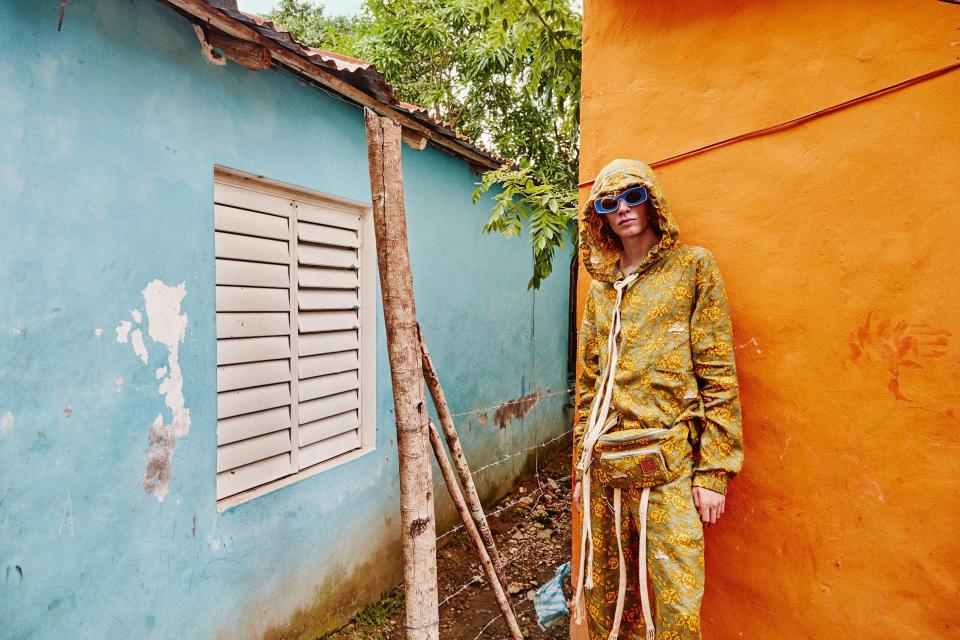
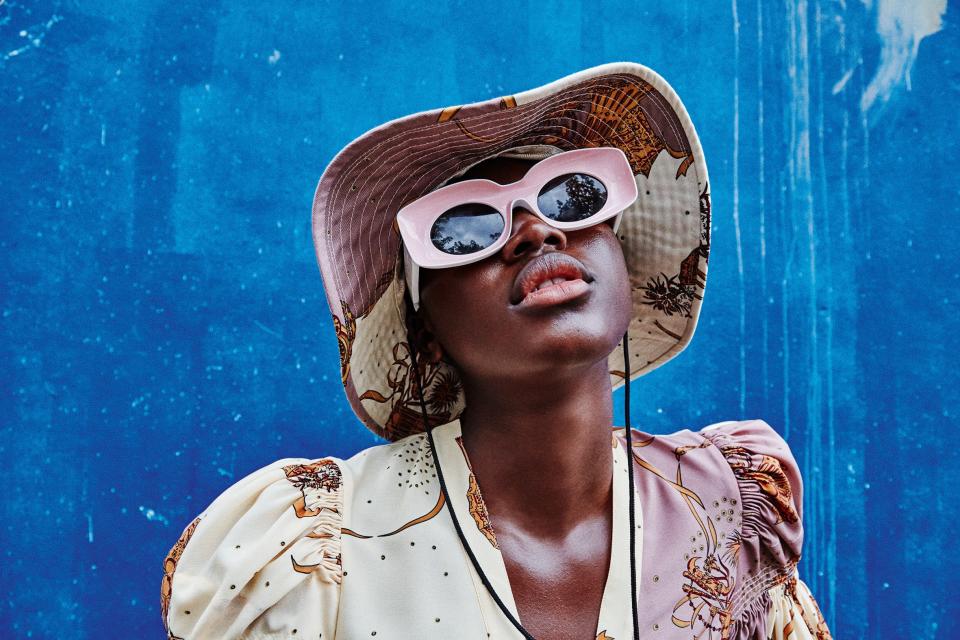
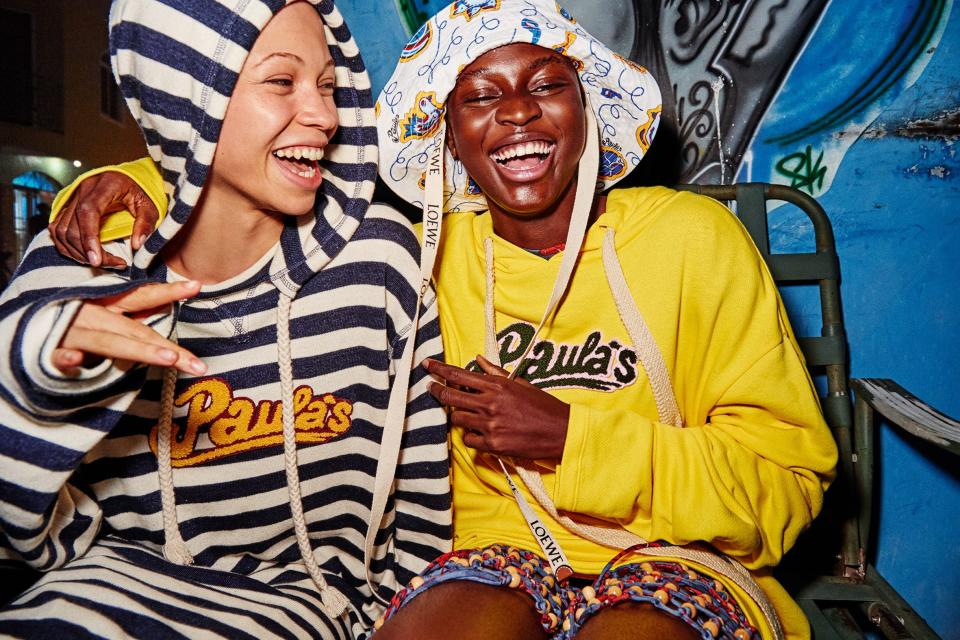

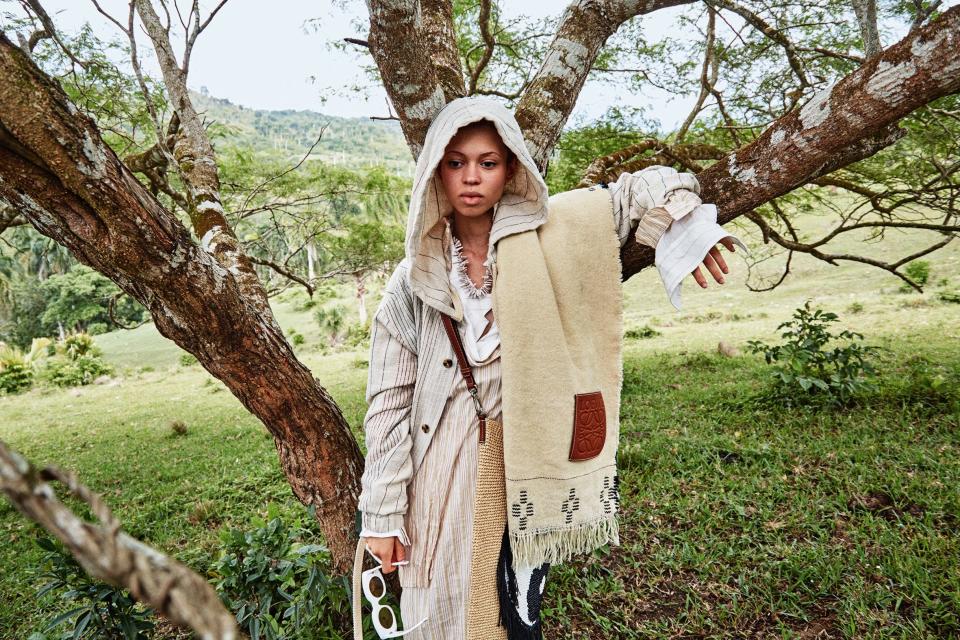
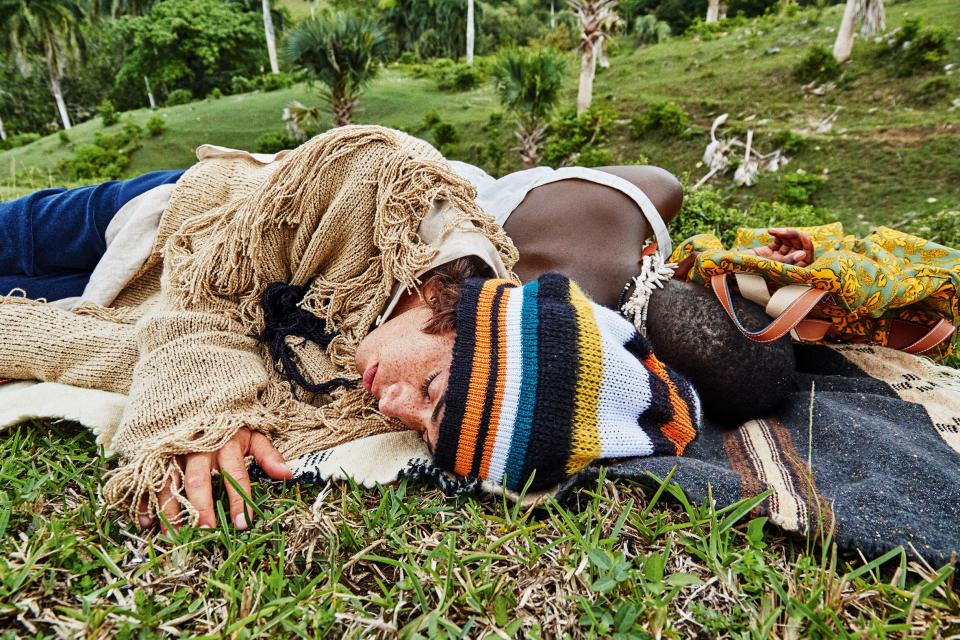


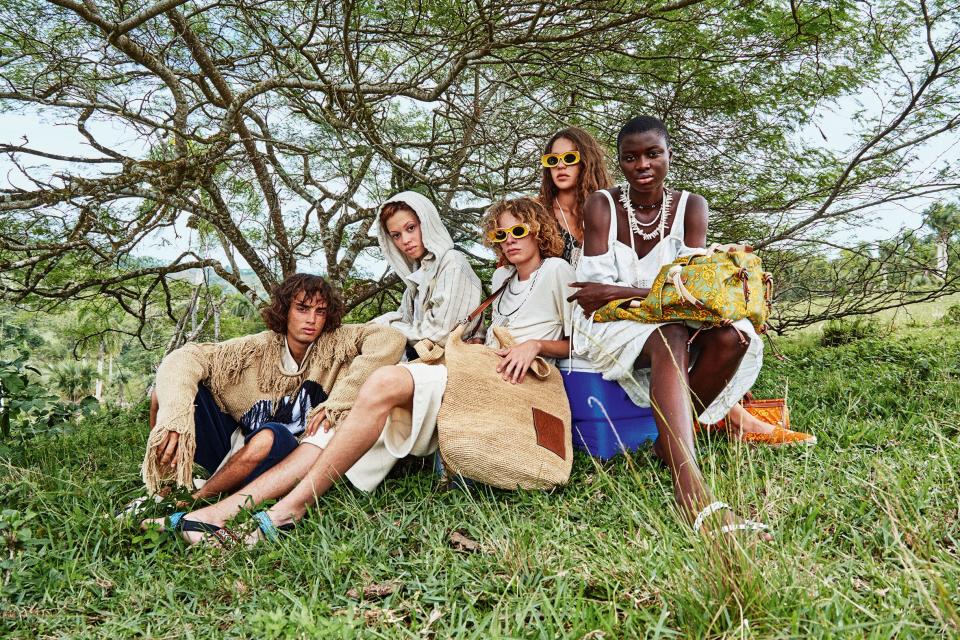
How did Loewe contact you about collaborating? And why did you say yes?
Loewe, well, that was after we already finished our shop. There was a time in between what I told you and Loewe which was almost 20 years. Before we closed the shop, I was already in touch with Alicia Alonso from the Ballet Nacional de Cuba. I did costume designs for her and stage settings. We had much success with that. One of our productions of Strauss’s Cinderella was the first production that went to America after 16 years of the prohibiting of Cuban art in America.
After that, Loewe came. They discovered us as something interesting or fascinating for them from the ’70s and ’80s, but this was in 2016. It was already another epoch. They contacted me and told me what they wanted. I had very many doubts at the beginning because I had already sort of left fashion, and also I knew that my way of working as I had described it to you before was very different from the way Loewe worked. I mean, Loewe is a big company which is organized from top to toe and works in a very professional, modern way. We worked like hippies. I said, “How could we come together? That couldn’t be possible!” Then Jonathan [Anderson, Loewe’s creative director] spoke with me, and by his determination, his will, that he absolutely wanted it, in the end, I said, “Well, if there’s someone who has so much desire to do this, something must be in it.” I discovered the fascination of these two worlds coming together: the super-organized luxury brand and the handicraft, hippie, direct-design world.
That is when I actually entered into the fashion world. Before, I was not in the fashion world, I only entered into the fashion world through Jonathan, and I have much trust in Jonathan. We decided that I would give to him the prints and the patterns that I have, and leave it up to him what he does with that. I have nothing to do with all the economic parts: the production, the marketing, and all that. I didn’t want to do that. Then he made his things out of it, and I thought it was beautiful, very fascinating. It is an adventure; it is a creative interpretation of the hippie freedom. It is a beautiful work based on nature, handicraft, and art, and it’s all in harmony with the conditions of the luxury market. That, I find, is a great achievement. I’m very happy with that.
Do you own the pieces Loewe makes? Do you wear them?
It’s all my prints, and when it’s something of your own, even though the fashion is different, I don’t really want to wear that. I feel that I don’t want to run around in my own prints. But I am very fascinated by the accessories and bags. I own all the bags, all the models of the bags that are worked with my prints. That, I find very beautiful and fascinating. I have my little collection of Loewe Paula’s bags.
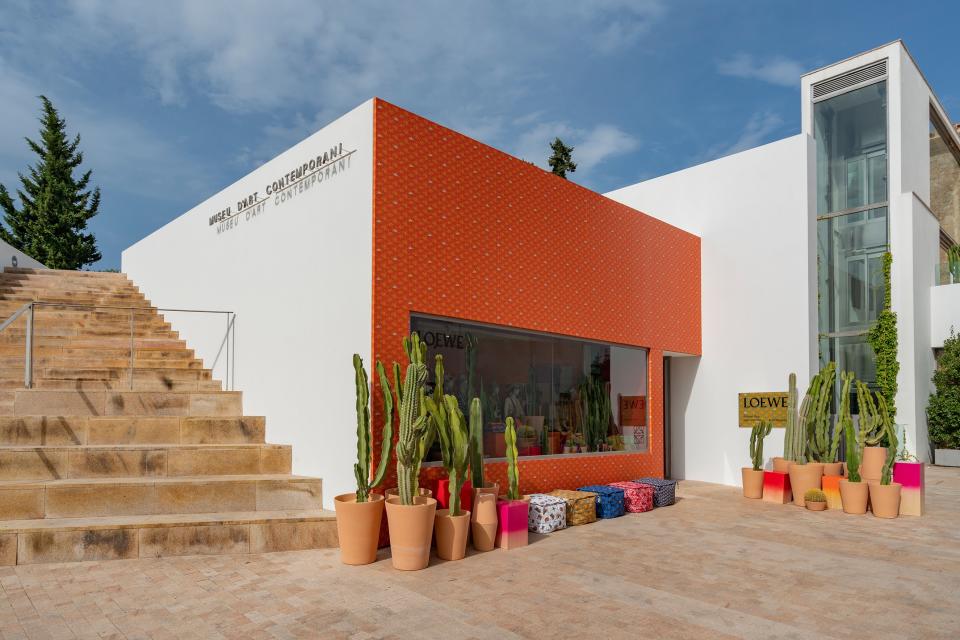
The Loewe Paula’s Ibiza books do their best to capture the hippie spirit in a contemporary way. Do you think that the hippie spirit can still exist today at all?
No, not at all! Loewe captured the hippie ethos in a good way, but it is 2019. We are not in the ’70s. You cannot copy something from the ’70s and bring it in 2019. It’s impossible. That would be stupid. They captured the atmosphere and the essence of the thing and what was happening in the ’70s, and they presented it in the language of 2019. The mental condition of 1972 was completely different.
Do you have any ideas for where you’d like the Loewe collaboration to go in the future, any products you’d like them to make?
I like to stay hands-off, and I trust Jonathan. I don’t want to be involved in business. I just believe that the collection will go its way, and the whole Paula’s thing in Loewe will go its way, and it’s just starting. I am sure it will develop in a beautiful way, and I am curious to see what comes out of it. I see it as an adventure, and I see it as a surprise, and I see it as a fascination. I want to keep it like that. I am happy to do a collaboration in this way because it gives us both freedom. That is what a collaboration should be.
This interview has been edited and condensed for clarity.
Originally Appeared on Vogue

